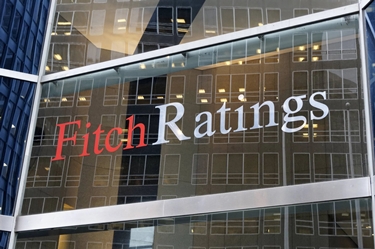Fitch Ratings has revised the Outlook on Turkmenistan’s Long-Term Foreign-Currency Issuer Default Rating (IDR) to Positive from Stable and affirmed the IDR at ‘B+’.
KEY RATING DRIVERS
The revision of the Outlook on Turkmenistan’s IDRs reflects the following key rating drivers and their relative weights:
Strengthening Balance Sheets: The external and sovereign balance sheets are benefiting from higher energy prices. Data for 9M22 show a current account surplus of USD4.7 billion (6.9% of Fitch-projected full year GDP) and exports for the full year on a customs basis were up 43% yoy. Fitch expects continued surpluses in 2023 and 2024, albeit narrowing due to a fall in energy prices and a pick-up in imports related to capital spending.
External debt fell to 6.1% of GDP at end-2022 and is forecast to remain stable to end-2024 due to the absence of significant new foreign-financed projects. Sovereign net foreign assets increased by USD4.9 billion in 2022 to USD35.1 billion and are projected to rise by a further USD5.4 billion to end-2024, equivalent to 54% of GDP (‘B’ median -25.3%).
Robust External Liquidity Metrics: The completion of large repayments related to a specific project combined with the jump in external assets has significantly improved already strong external liquidity indicators. External debt service to current external receipts fell to 7.8% in 2022 (‘B’ median 17.3%) from 26.8% in 2020, while reserves to current external payments were equivalent to 47.5 months in 2022 (‘B’ median 3.4 months). Balance of payments data has improved, although gaps remain.
Budget Surplus: Preliminary data put the state budget surplus for 2022 at 1% of GDP based on Fitch’s presentation, the first surplus since 2014, with oil and gas revenues jumping by 80%. The lagged pass-through embedded in energy contracts and still high prices will ensure revenues remain strong over our forecast period and while we expect capital spending to rise in response, the surplus is forecast to widen to 1.4% of GDP in 2023 before returning to a small deficit in 2024.
Very Low Debt: Public debt fell to 6.1% of GDP at end-2022 (‘B’ median 57%) reflecting the repayment of all domestic debt in January, and is forecast to fall further with the government indicating it does not intend to borrow domestically. Liquid assets of the fiscal reserve fund, Turkmenistan Stabilisation Fund (TSF), were 4.7% of GDP at end-2022. Off-budget transfers to and from the TSF and the role of off-budget entities and funds, particularly in capital spending, lack transparency and complicate the assessment of the fiscal position, but Fitch does not see evidence of additional public debt.
Factors that could, individually or collectively, lead to positive rating action/upgrade:
–Public/External Finances: Confidence that the strengthening of the public and external balance sheet will be sustained, for example reflecting persistently higher prices of key hydrocarbon exports or greater export capacity, and potentially accompanied by greater transparency on the public sector balance sheet.
–Macro: An improvement in the credibility and consistency of economic policy that reduces macroeconomic distortions and enhances the capacity of the economy to absorb shocks.
–Structural: An improvement in governance standards, the business environment and the availability and reliability of key official economic data, likely underpinned by policies to open the economy.
The full commentary is available here: https://www.fitchratings.com/research/sovereigns/fitch-revises-turkmenistan-outlook-to-positive-affirms-at-b-10-02-2023
///FitchRatings, 10 February 2023
